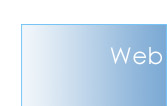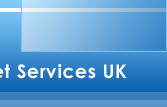Color Psychology For Retaining Website Visitors
As there does not exist any one-to-one relationship with the visitor and the website owner, there definitely is need for an interface which would persuade the visitors to stay longer in the website. Though such persuasive interface is normally considered as the content of the website , there are also other factors like the design and the look and feel of the website and, most importantly, the colours used in the website which either impress or drive away the visitors.
The colours used for the websites play a pivotal role, especially in the case of websites used for professional purposes. It is usually suggested to use a maximum of three or four colours for professional websites as it would give an organic look to the website. There are also a few simple guidelines which should be remembered while designing the websites. These are about the use of background colours like yellow and black which would be too heavy and strain the eyes of the viewers. These colours would, after sometime, begin to irritate the viewer and drive him/her out of the website. Use of black as the background colour may be avoided as it would limit the use of font colour to white or yellow alone, again causing strain to the visitor's eyes.
Mild blend of colours can be used for professional and business websites. In the event of confusion, colour wheels or colour palettes, which suggest various colour combination blends can be used. These palettes are normally available online for free. Use of monolithic colours (colours of the same shade) are said to give a hi-fi look to the professional websites, but it depends on the target market for which the website is designed for. Colours can be selected based on the business model, the message you wish to convey, the target audience and the culture they belong to. For instance, red is said to be persuasive and daring and blue is said to reflect professionalism, quality and trustworthiness. A little research on the ethics of colour in different cultures could be of help.
Bright colours and catchy colour combinations can be used in entertainment portals, kids websites, cosmetics websites, recipe websites and websites which are meant to be dazzling. As there are no hard and fast rules for the use of colours, a good sense of colour combinations is expected to work out well.
For websites, it is always advisable to choose only browser-safe colours or Netscape palette or web palette or 216 colours or 6x6x6 colour code. These are said to be compatible with a 256 colour code monitor which is used by the website user. Otherwise, the colours in the website would look distorted and shabby. It has been noticed that websites designed, based on all the criteria mentioned above, to be more successful in retaining the visitors than websites whose colours are chosen randomly and blindly. The designing technique followed by us at Web Design UK very much adheres to the colour selection process which projects the websites to be more professional than they are meant to be.





